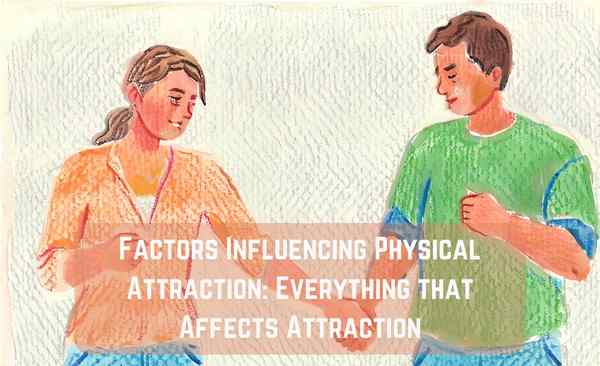What makes someone physically attractive?
Is it their dazzling smile, sparkling eyes, or perhaps something more subtle and mysterious? Physical attractiveness is a powerful yet enigmatic force that has captivated the attention of scientists, philosophers, and artists throughout history.
In this article, we delve into the compelling world of factors Influencing physical attraction, from genetic compatibility and facial symmetry to cultural norms and evolutionary biology, join us on a captivating journey as we uncover the secrets behind the science of physical attraction and its profound impact on our lives and relationships.
Attraction is a complex and mystifying concept, encompassing a diverse array of factors that shape our preferences and desires.
From facial symmetry to cultural norms, attraction transcends mere physical appearance, delving into the realm of psychology and social dynamics.
Physical Attraction vs Emotional Attraction
Physical attraction and emotional attraction, although interconnected, are distinct concepts in the realm of human relationships. Physical attraction, fueled by biology and evolutionary processes, is based on an individual’s physical appearance and is often experienced as an instant, visceral reaction to someone’s looks.
On the other hand, emotional attraction arises from shared experiences, personal values, and emotional connections, taking longer to develop and deepening over time. A 2012 study published in the Journal of Social and Personal Relationships found that while physical attraction is important initially, emotional attraction becomes more influential as relationships progress, leading to increased satisfaction and stability.
Different Scientific Perspectives about Attraction
Attraction has been a subject of scientific inquiry for decades, with researchers examining various aspects of human behavior, biology, and social factors to gain insight into the nature of attraction.
Here’s an image to summarize all of those perspectives:
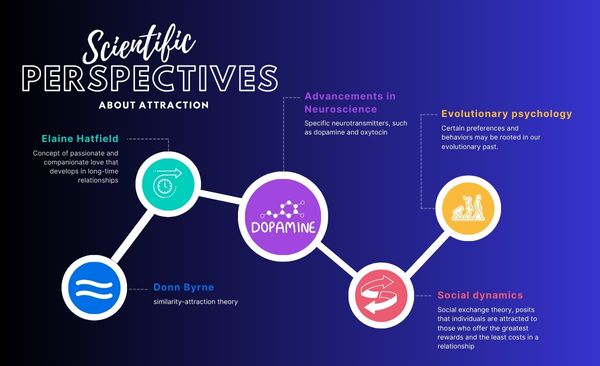
One of the earliest psychological theories, proposed by psychologist Donn Byrne, is the similarity-attraction theory, which suggests that people are attracted to others who share similar attitudes, values, and beliefs (Byrne, 1971).
Furthermore, psychologist Elaine Hatfield and her colleagues introduced the concept of passionate and companionate love, highlighting the distinction between intense emotional and physical attraction (passionate love) and the deep affection and attachment that develop over time in long-term relationships (companionate love) (Hatfield & Sprecher, 1986).
Advancements in neuroscience have also provided new insights into the biological underpinnings of attraction. Researchers have identified specific neurotransmitters, such as dopamine and oxytocin, that are involved in the experience of attraction and attachment (Fisher, Aron, & Brown, 2005).
In addition to individual factors, social dynamics also play a significant role in attraction. Social exchange theory, for example, posits that individuals are attracted to those who offer the greatest rewards and the least costs in a relationship, suggesting that attraction is influenced by perceived benefits and potential risks (Thibaut & Kelley, 1959).
Evolutionary psychology also offers valuable perspectives on attraction, with researchers suggesting that Scie. For instance, men may be attracted to women with youthful features and a low waist-to-hip ratio, as these traits are associated with fertility and reproductive potential (Buss, 1989).
Amazing right?
This shows that what’s behind physical attractiveness psychology is a multifaceted phenomenon that is influenced by a myriad of factors, including biology, psychology, and social dynamics.
Understanding these various aspects can help us develop a more comprehensive and nuanced appreciation of the complex nature of human attraction.
Biological Features Contributing to the Physical Attractiveness Psychology
Dive headfirst into the intriguing world of physical attractiveness psychology, where countless factors shape our perceptions of beauty and attraction! From mesmerizing facial symmetry to captivating eye contact and the magnetic charm of averageness, we’ll explore the elements that define our desires and preferences. Unravel the complexities of human attraction with us and unlock the secrets to forging deeper connections and more meaningful relationships in your life.
You can jump to these:
- The Allure of Averageness: The Attraction of Familiar Features
- Facial Features: Decoding the Science of Good Looks
- The Eyes Have It: Windows to the Soul and Attraction
- Body Language: The Unspoken Language of Attraction
- The Power of Scent: Pheromones and Attraction
Get ready to be captivated by the science behind what makes someone truly alluring!
The Art of Symmetry: Aesthetic Balance and Appeal

Symmetry is like a secret ingredient that adds to a person’s attractiveness. It represents balance, harmony, and a strong genetic makeup. Studies have revealed that we tend to find symmetrical faces more appealing, probably because they signal good health and fertility.
So, the next time you’re drawn to someone’s captivating looks, remember that the magic of symmetry might just be at play!
One of the most well-known studies on facial symmetry and attractiveness was conducted by psychologist Randy Thornhill and his colleagues (Thornhill & Gangestad, 1993). In this study, the researchers found that both men and women rated symmetrical faces as more attractive than asymmetrical faces, suggesting that symmetry is an important cue for attractiveness across sexes.
In a later study, Thornhill and his team examined the relationship between facial symmetry and health, finding that individuals with more symmetrical faces reported fewer health problems and had stronger immune systems (Thornhill & Gangestad, 2006). This supports the notion that facial symmetry may be an indicator of good genetic health and overall wellbeing.
Symmetry is not limited to the face, however. Research has also demonstrated that body symmetry can influence perceptions of attractiveness. In a study by Brown et al. (2005), participants rated images of individuals with symmetrical bodies as more attractive than those with asymmetrical bodies.
Moreover, studies have shown that the preference for symmetry extends to other species as well. For example, research on birds has found that females are more likely to mate with males that have symmetrical plumage, suggesting that the preference for symmetry is not unique to humans (Møller, 1992).
Interestingly, the preference for symmetry may have an evolutionary basis. According to the “good genes” hypothesis, symmetrical individuals are more likely to possess high-quality genes, which can be passed on to their offspring. This could explain why humans and other animals have evolved to prefer symmetrical mates, as they may be better equipped to produce healthy, viable offspring (Zahavi & Zahavi, 1997).
In a nutshell, symmetry holds the key to attraction, as it captivates us not only in human faces and bodies but also across various species. The allure of symmetry might stem from evolutionary influences, signaling good genetic health and promising reproductive prospects.
The Allure of Averageness: The Attraction of Familiar Features
The allure of averageness is a fascinating aspect of attraction, with research suggesting that individuals are drawn to those with average or familiar facial features. This preference may be due to the perception of average faces as more representative of the population and thus more genetically diverse.
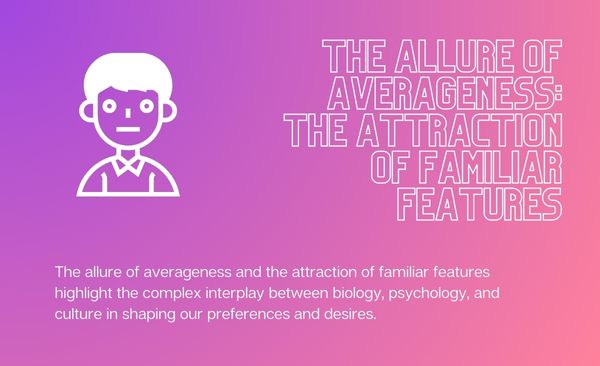
In a landmark study by psychologist Judith Langlois and her colleagues (1994), participants rated computer -generated composite faces as more attractive than individual faces, indicating that average facial features are perceived as more appealing. This phenomenon has been termed the “averageness effect.”
The preference for averageness is thought to have an evolutionary basis. According to the “heterozygosity hypothesis,” individuals with average features are more likely to possess a diverse set of genes, which can confer various advantages, such as enhanced immune function and greater adaptability to environmental changes (Thornhill & Gangestad, 1993).
In addition to averageness, familiarity also plays a role in attraction. Research has shown that people are more likely to be attracted to those who resemble their own facial features or those of their parents, a phenomenon known as “imprinting” (Bereczkei et al., 2004). This preference may be due to the perception of familiar features as trustworthy and reliable.
However, it is important to note that the preference for averageness and familiarity is not absolute. Studies have shown that certain facial features, such as high cheekbones and a prominent jawline, are considered universally attractive and can override the averageness effect (Cunningham et al., 1995).
Moreover, the preference for averageness and familiarity can be influenced by cultural and environmental factors. For instance, research has demonstrated that individuals living in harsh environments may prefer more exaggerated, masculine features, as these traits may signal strength and resilience (Penton-Voak et al., 2004).
The captivating dance of attraction, blending biology, psychology, and culture, draws us into a fascinating world of desires and preferences. By delving into the magnetic pull of average yet familiar features, we uncover a rich tapestry of influences that shape our affections.
Facial Features: Decoding the Science of Good Looks
Have you ever wondered what makes a face truly captivating? It turns out that certain facial features hold the key to unlocking the secrets of attractiveness. With a unique blend of proportions and configurations, some faces just seem to have that universal appeal. Intriguingly, the golden ratio—a mathematical concept found throughout nature—plays a surprising role in shaping our perceptions of beauty when it comes to facial proportions.
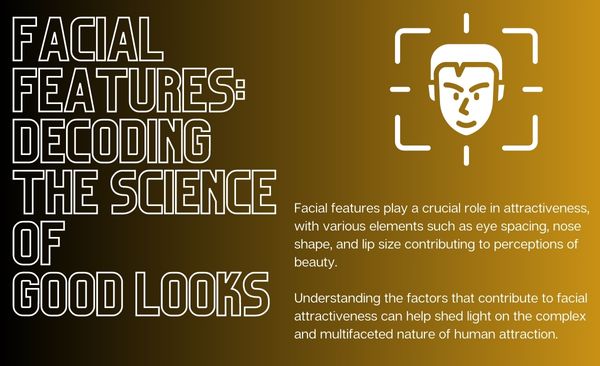
Research on facial attractiveness has identified a number of features that are generally considered appealing. One such feature is the distance between the eyes, with a wider spacing being associated with higher attractiveness ratings (Cunningham, 1986).
Another important aspect of facial attractiveness is the shape and size of the nose. Studies have shown that both men and women prefer noses that are of average size and proportionate to the rest of the face (Farkas et al., 2005).
Lips also play a significant role in facial attractiveness. Fuller lips have been found to be more attractive in women, while men with thinner lips are perceived as more masculine and attractive (Morrison et al., 2007).
The role of facial adiposity (fat distribution) in attractiveness has also been investigated. Research has found that individuals with lower facial adiposity are perceived as more attractive, likely due to the association between lower body fat levels and good health (Coetzee et al., 2009).
Several studies have explored the concept of the golden ratio, a mathematical principle that has been linked to beauty in art, architecture, and nature. Researchers have found that facial proportions that adhere closely to the golden ratio are considered more attractive (Marquardt, 2002). This suggests that there may be an innate preference for certain facial proportions, which could have evolved to promote reproductive success.
It turns out that our faces hold the key to unlocking the mystery of attractiveness. With each detail, from the perfect distance between our eyes to the curve of our noses and the fullness of our lips, our faces weave a spellbinding story of beauty. By exploring these captivating factors, we can truly appreciate the intricate tapestry that is human attraction and uncover the secrets it holds.
So, let’s dive in and discover the mesmerizing power of facial features and their incredible impact on our perception of beauty.
The Eyes Have It: Windows to the Soul and Attraction
Eye contact and eye features are integral to attraction, as they serve as subtle communicators of interest and intent. Prolonged eye contact can create feelings of intimacy, while eye shape and color can influence perceptions of attractiveness.
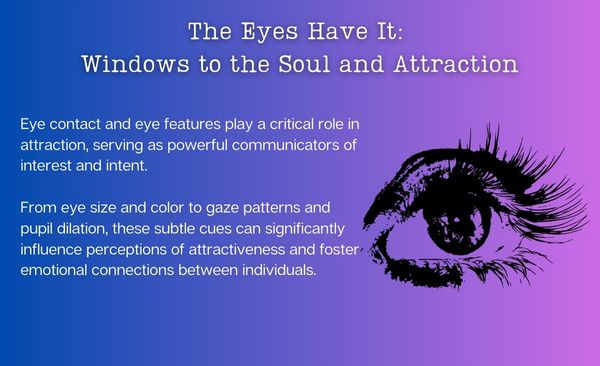
In a landmark study by psychologist Arthur Aron and his colleagues (1997), participants were instructed to engage in sustained eye contact with a stranger for four minutes. The results revealed that participants reported increased feelings of closeness and attraction toward their partner after the eye-gazing task, demonstrating the powerful role of eye contact in fostering connection.
Research on eye features has also identified several elements that contribute to attractiveness. For example, studies have shown that men tend to prefer women with larger eyes, which may be associated with youthfulness and innocence (Cunningham, 1986).
Eye color has also been found to play a role in attractiveness, with some research suggesting that people are attracted to those with similar eye colors (Laeng et al., 2007). This preference may be due to a phenomenon known as positive assortative mating, in which individuals are drawn to those with similar traits, potentially increasing genetic compatibility.
Additionally, the limbal ring—the dark circle around the iris—has been found to influence attractiveness. In a study by Peshek et al. (2011), participants rated individuals with more prominent limbal rings as more attractive, with researchers suggesting that this feature may be a sign of good health and youth.
The role of eye movements in attraction has also been explored, with researchers finding that people are more likely to be attracted to those who exhibit mutual gaze, or the act of looking into each other’s eyes (Argyle & Cook, 1976). This form of nonverbal communication can signal interest and foster feelings of intimacy and connection.
Lastly, research has shown that the act of pupil dilation can impact attraction. In a study by Tombs and Silverman (2004), participants were more likely to rate images of individuals with dilated pupils as attractive. This could be due to the fact that pupil dilation is associated with arousal, signaling interest and receptiveness to a potential partner.
Ever wondered what makes someone’s gaze so captivating? The eyes truly are the windows to the soul, playing a crucial role in attraction and sparking intrigue from the very first glance. It’s all about the subtle cues – from the enchanting hues of eye color to the magnetic pull of prolonged eye contact.
These seemingly small details, like the dance of our pupils as they dilate, hold the power to sway our perceptions of attractiveness and forge emotional bonds between people. So, the next time you find yourself drawn to someone’s eyes, remember – there’s a lot more to it than meets the eye!
Body Language: The Unspoken Language of Attraction
Body language is an essential component of attraction, as it conveys subtle cues about our feelings, intentions, and receptiveness. From posture to facial expressions, body language can speak volumes about a person’s level of interest and attraction.
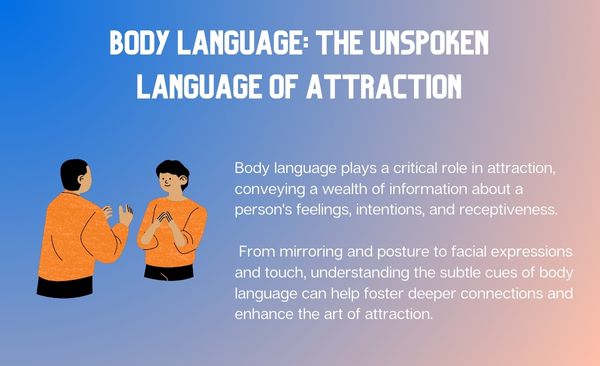
One of the most well-known aspects of body language is the concept of “mirroring,” or the unconscious mimicry of another person’s gestures and postures. Research has shown that individuals who engage in mirroring are perceived as more attractive and likable (Chartrand & Bargh, 1999).
Posture is another important element of body language in the context of attraction. Studies have found that individuals who adopt open, expansive postures are perceived as more attractive and confident, while those who adopt closed, constrictive postures are seen as less attractive and approachable (Vacharkulksemsuk et al., 2016).
Facial expressions also play a significant role in attraction, with research indicating that smiling is universally perceived as attractive and inviting (Otta et al., 1996). In contrast, expressions of anger or disgust can be off-putting and signal a lack of interest or compatibility.
Touch is another powerful form of nonverbal communication that can influence attraction. Research has demonstrated that even brief, nonsexual touches can increase feelings of attraction and connection between individuals (Gueguen, 2007).
Moreover, the way people move can impact perceptions of attractiveness. In a study by Neave et al. (2011), participants rated individuals who exhibited confident, fluid movements as more attractive than those with awkward or hesitant movements.
Body language holds the key to our hearts, silently revealing our emotions, desires, and openness. So, pay attention to the little things – the way we mirror each other, our posture, the twinkle in our eyes, and the gentle touch of a hand. Mastering these silent whispers of attraction will unlock deeper connections and transform the way we experience love and desire.
The Power of Scent: Pheromones and Attraction
The role of scent in attraction is often overlooked, but it plays a crucial part in the complex tapestry of human attraction. Pheromones, which are chemical signals secreted by individuals, can influence attraction and mating preferences in subtle yet significant ways.
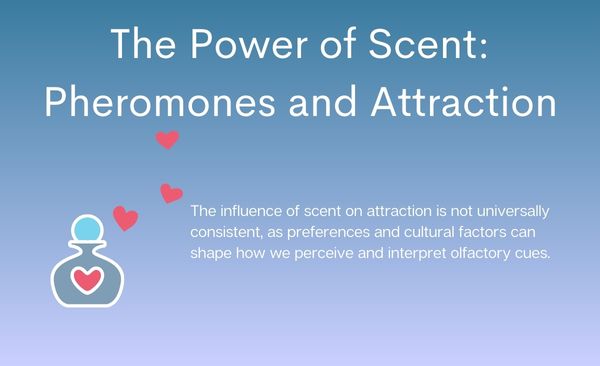
Research has shown that people are attracted to the scent of individuals with dissimilar immune system genes, known as the major histocompatibility complex (MHC) (Wedekind et al., 1995). This preference is thought to have evolved to promote genetic diversity in offspring, potentially enhancing their immune function and overall health.
Moreover, studies have demonstrated that women are more sensitive to male pheromones during the fertile phase of their menstrual cycle, suggesting that hormonal fluctuations may influence attraction and mate preferences (Sergeant et al., 2005).
In addition to pheromones, research has also explored the role of body odor in attraction. In a study by Havlicek et al. (2008), participants rated the body odor of individuals with dissimilar MHC genes as more attractive, further supporting the notion that scent plays a role in mate selection.
The role scent plays in attraction can be quite a tantalizing mystery. Our preferences and cultural backgrounds add their own unique twists to how we perceive and appreciate the alluring world of fragrances. So, as we navigate the complexities of attraction, it’s fascinating to remember that the power of scent can weave its own enchanting spell in our romantic lives.
Social Status and Resources: The Role of Socioeconomic Factors in Attraction
Social status and resources play a significant role in attraction, as they can signal an individual’s ability to provide for and protect potential mates and offspring. Research has consistently shown that both men and women are attracted to individuals with high social status and access to resources.
- The Role of Personality in Attraction
- The Impact of Culture on Attraction
- The Halo Effect: The Influence of Attractiveness on Social Perception
In a study by Buss (1989), participants rated individuals with high social status and financial resources as more attractive, highlighting the importance of these factors in mate selection. This preference is thought to have evolved to promote reproductive success, as individuals with greater resources are more likely to be able to provide for and protect their offspring.
While social status and resources can play a significant role, factors like physical attractiveness and emotional compatibility often take center stage in some societies. This captivating diversity reminds us that the world of human attraction is as intricate and unique as the individuals who experience it.
The Role of Personality in Attraction
While physical appearance and nonverbal cues play a significant role in attraction, personality traits also contribute to our preferences and desires. Research has shown that certain personality characteristics, such as warmth, kindness, and humor, can enhance an individual’s attractiveness and foster deeper connections.
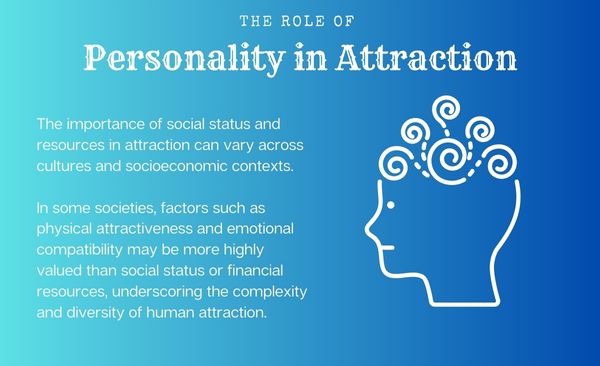
In a study by Swami et al. (2011), participants rated individuals with positive personality traits as more attractive, suggesting that personality can significantly impact perceptions of beauty. Furthermore, research has shown that people tend to be attracted to those who share similar personality traits and values, a phenomenon known as the “similarity effect” (Botwin et al., 1997).
The Impact of Culture on Attraction
Culture plays a significant role in shaping our perceptions of attractiveness, as different societies and cultural groups may value different physical features, personality traits, and social factors. Understanding the impact of culture on attraction can provide valuable insights into the diverse ways that humans perceive and experience beauty.
Research has shown that cultural factors can influence preferences for body size and shape. For example, in Western societies, thinness is often considered attractive, while in some non-Western cultures, larger body sizes may be more highly valued (Swami & Furnham, 2008).
Similarly, preferences for skin color and tone can vary across cultures, with some societies valuing lighter skin tones and others preferring darker skin (Feinman & Gill, 1978). These preferences can be influenced by historical, social, and economic factors, as well as by individual experiences and beliefs.
Cultural factors can also impact perceptions of facial attractiveness. For instance, some research suggests that people from East Asian cultures may prioritize facial features associated with youthfulness, such as large eyes and smooth skin, while individuals from Western cultures may place greater emphasis on features linked to maturity and dominance, such as a prominent jawline and high cheekbones (Wang et al., 2016).
In addition to physical features, cultural factors can also influence preferences for personality traits, social status, and other factors related to attraction. For example, some societies may prioritize emotional compatibility and shared values, while others may place greater emphasis on material wealth or social standing.
The impact of culture on attraction highlights the diverse and multifaceted nature of human beauty, emphasizing that our perceptions of attractiveness are shaped by a complex interplay of biological, psychological, and cultural factors.
By recognizing and embracing this diversity, we can develop a more inclusive and nuanced understanding of attraction, fostering greater empathy and connection across cultural boundaries.
The Halo Effect: The Influence of Attractiveness on Social Perception
The Halo Effect is a psychological phenomenon in which an individual’s attractiveness can influence our perceptions of their other traits, such as intelligence, kindness, and competence.
This bias can have significant implications for how we interact with and evaluate others, as well as for our own self-perceptions and experiences.
In a classic study by Dion et al. (1972), participants rated attractive individuals as more intelligent, competent, and socially skilled than their less attractive counterparts. These findings suggest that physical attractiveness can have a powerful impact on our perceptions of others, leading us to attribute positive traits to those we find attractive.
The Halo Effect can also influence our own self-perceptions and experiences. Research has shown that individuals who are considered attractive may enjoy certain social advantages, such as greater popularity, higher income, and better job opportunities (Langlois et al., 2000). However, these benefits can also come with drawbacks, as attractive individuals may face greater pressure to maintain their appearance and may be more likely to experience objectification or unwanted attention.
Understanding the Halo Effect and its implications for our social perceptions and interactions can help us challenge and overcome biases related to attractiveness, fostering greater empathy, fairness, and equity in our relationships and interactions.
The Role of Media in Shaping Attraction
Media plays a significant role in shaping our perceptions of attractiveness by promoting certain beauty ideals and standards. From advertisements and fashion magazines to television shows and movies, media images can influence our preferences and shape our self-perceptions.
- Attraction in the Digital Age: Online Dating and Social Media
- The Future of Attraction: Advancements in Technology and the Evolution of Human Preferences
Research has shown that exposure to media images of idealized beauty can lead to the internalization of these standards and contribute to body dissatisfaction and self-esteem issues, particularly among women (Grabe et al., 2008). Furthermore, media representations of beauty often lack diversity, perpetuating narrow and unrealistic standards of attractiveness.
In a world that’s finally embracing diversity, we’re witnessing an inspiring movement to redefine beauty standards. Brands and campaigns are now celebrating a variety of body shapes, skin tones, and facial features, broadening our perception of what it means to be attractive.
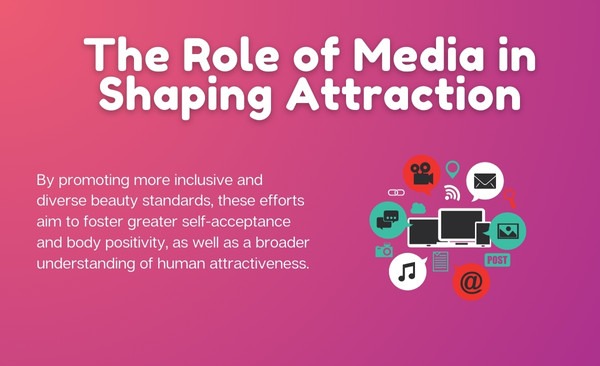
This refreshing shift promotes self-acceptance, body positivity, and a deeper appreciation for the unique and diverse nature of human beauty, enriching our understanding of attraction and its many facets.
Attraction in the Digital Age: Online Dating and Social Media
The rise of online dating and social media has transformed the landscape of human attraction, offering new opportunities and challenges for connecting with potential partners. From swiping on dating apps to curating the perfect social media profile, the digital age has introduced novel ways of experiencing and navigating attraction.
Research on online dating revealed that physical attractiveness plays a significant role in shaping initial impressions and interest, with users often making split-second decisions based on profile pictures (Hitsch et al., 2010). However, studies have also found that factors such as shared interests, personality traits, and communication styles can contribute to long-term compatibility and relationship success (Finkel et al., 2012).
In the realm of social media, the presentation of the self has become an integral part of the attraction process, with users curating and editing their images and profiles to present their most attractive selves.
This self-presentation can have both positive and negative implications for self-esteem, body image, and interpersonal connections, as individuals strive to balance authenticity with desirability (Perloff, 2014).
The digital age has introduced new dimensions to the experience of attraction, shaping our preferences, desires, and connections in profound and complex ways.
The Future of Attraction: Advancements in Technology and the Evolution of Human Preferences
As technology continues to advance and reshape our lives, it is essential to consider how these changes might impact our perceptions and experiences of attraction. From the development of virtual reality and artificial intelligence to the ongoing exploration of human genetics and neuroscience, the future of attraction promises to be a fascinating and complex frontier.
For instance, virtual reality offers the potential to revolutionize our understanding of attraction by allowing us to experience and manipulate a wide range of physical features, environments, and interpersonal scenarios. This technology could provide valuable insights into the myriad factors that shape our preferences and desires, as well as offer novel opportunities for connection and exploration.
Similarly, advances in artificial intelligence and robotics could challenge and expand our notions of attraction, as we grapple with questions of intimacy, desire, and connection in relation to non-human entities.
In the realm of genetics and neuroscience, ongoing research into the biological and psychological underpinnings of attraction may yield new discoveries and interventions, potentially enhancing our understanding of human preferences and fostering deeper connections.
The Neuroscience of Attraction: Exploring the Brain’s Role in Desire and Connection
The field of neuroscience offers a unique window into the biological underpinnings of attraction, shedding light on the complex interplay between our brains, bodies, and emotions in the experience of desire and connection.
Research has identified several brain regions and neurotransmitters involved in the process of attraction, including the ventral tegmental area (VTA), which plays a role in the release of dopamine—a neurotransmitter associated with pleasure and reward (Fisher et al., 2005).
In addition to dopamine, other neurotransmitters and hormones such as oxytocin, serotonin, and vasopressin have been implicated in the experience of attraction and attachment, highlighting the complex neurochemical basis of our desires and connections (Insel & Young, 2001).
Neuroimaging studies have also provided valuable insights into the neural correlates of attraction, revealing that viewing images of attractive individuals can activate brain regions involved in reward processing, such as the nucleus accumbens and the orbitofrontal cortex (Aharon et al., 2001).
By exploring the neuroscience of attraction, we can deepen our understanding of the biological and psychological factors that contribute to our desires and connections, ultimately fostering a more nuanced and comprehensive appreciation of the enigmatic phenomenon of attraction.
Attraction Across the Lifespan: Age and the Dynamics of Attraction
Attraction is a dynamic process that evolves across the lifespan, influenced by factors such as age, life experiences, and changing priorities. Understanding the ways in which attraction shifts and develops throughout our lives can provide valuable insights into the complexities of human connection and desire.
Research has shown that preferences for certain physical features and personality traits can change as we age, reflecting our evolving needs and priorities. For example, older adults may place greater emphasis on emotional compatibility and shared values, while younger individuals may prioritize physical attractiveness and novelty (Montoya, 2008).
In addition to shifting preferences, the dynamics of attraction can also be influenced by age-related changes in biology and psychology. For instance, hormonal fluctuations associated with aging can impact sexual desire and attraction, as can age-related changes in cognitive function and emotional regulation (Starr & Weiner, 2007).
As we navigate the various stages of life, our experiences and relationships can also shape our perceptions of attraction, with factors such as attachment styles, relationship history, and social networks playing a role in our preferences and desires (Hazan & Shaver, 1987).
In conclusion, the study of attraction across the lifespan offers valuable insights into the diverse and dynamic ways in which our preferences and desires evolve and adapt throughout our lives. By understanding these changes, we can foster greater empathy, connection, and self-awareness in our relationships and interactions.
The Dark Side of Attraction: Unhealthy Patterns and Relationship Dynamics
While attraction can lead to meaningful connections and fulfilling relationships, it can also give rise to unhealthy patterns and dynamics. Recognizing and addressing these darker aspects of attraction is crucial for fostering self-awareness, personal growth, and healthier relationships.
- Some individuals may be drawn to unhealthy relationship dynamics, such as those characterized by control, manipulation, or codependency. These patterns can be rooted in attachment styles, past trauma, or learned behaviors, and can perpetuate cycles of pain and dysfunction (Bowlby, 1988).
- Attraction can also be influenced by factors such as narcissism, low self-esteem, or the pursuit of external validation, which can lead to the prioritization of superficial qualities over emotional compatibility and shared values (Campbell & Foster, 2002).
Recognizing and addressing the darker aspects of attraction requires self-awareness, introspection, and a commitment to personal growth. By challenging and examining our patterns and preferences, we can work to cultivate healthier relationships and connections based on mutual respect, trust, and emotional intimacy.
The Interplay between Attraction, Self-Esteem, and Well-Being
The experience of attraction can have significant implications for our mental health and well-being, as our perceptions of beauty and desirability can shape our self-esteem, body image, and overall sense of self-worth.
Research has shown that individuals who experience high levels of body dissatisfaction or who internalize unrealistic beauty standards may be at an increased risk for mental health issues such as depression, anxiety, and eating disorders (Stice et al., 2000). Furthermore, negative self-perceptions related to attractiveness can undermine our confidence and self-efficacy in various domains of life, from work and education to relationships and personal growth.
On the other hand, positive experiences of attraction and connection can contribute to our well-being, fostering feelings of happiness, contentment, and self-acceptance. By cultivating a healthy relationship with our own bodies and appearances, we can nurture our self-esteem and promote greater emotional resilience and well-being.
In conclusion, the interplay between attraction, self-esteem, and mental health highlights the importance of fostering a balanced and compassionate relationship with our own bodies and beauty. By embracing our unique qualities and prioritizing self-love and self-acceptance, we can cultivate a strong foundation for mental health and well-being.
Breaking Free from Attraction Stereotypes: Embracing the Diversity of Human Beauty
In a world where beauty standards and ideals are often narrow and exclusionary, it is essential to challenge and diversify our perceptions of attractiveness. By embracing the rich diversity of human beauty and recognizing the myriad factors that contribute to our desires and connections, we can foster a more inclusive and empowering understanding of attraction.
This process may involve questioning societal norms and expectations related to beauty, as well as examining our own biases and preferences. By engaging in self-reflection and challenging dominant beauty narratives, we can create space for a more expansive and nuanced appreciation of human attractiveness.
In addition, promoting diversity and representation in media, fashion, and other domains can help to normalize and celebrate a wider range of body types, facial features, and physical characteristics, fostering greater acceptance and celebration of our unique qualities.
By breaking free from attraction stereotypes and embracing the diversity of human beauty, we can cultivate a more compassionate and inclusive understanding of attraction, fostering greater empathy, connection, and self-love.
WRAP UP: Multifaceted Nature of Physical Attractiveness Psychology
The study of physical attractiveness psychology offers valuable insights into the diverse and multifaceted factors that shape our perceptions of beauty and attraction.
of factors that influence our perceptions of beauty and attraction. From facial symmetry and body language to cultural norms and evolutionary cues, these elements work together to create a magnetic pull between individuals. As we continue to explore and understand the intricate dance of attraction, we can gain greater insight into the driving forces behind our romantic choices and appreciate the complex beauty of human connection.
So, the next time you find yourself drawn to someone, remember that it’s more than just a simple matter of appearance—it’s a fascinating tapestry of factors working together to ignite the spark of attraction.

